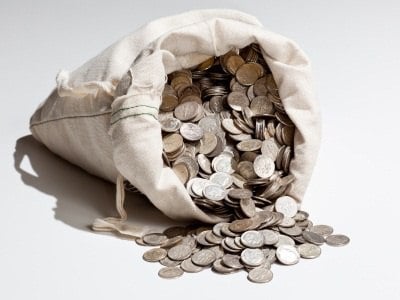Bill Changers: Are your employees giving out more change than receiving purchases?
As a business owner trying to make a sales goal and having enough money in your drawer, it can be quite annoying when people come into your business,...
2 min read
 Sean Farrell
:
Oct 6, 2015 7:30:00 AM
Sean Farrell
:
Oct 6, 2015 7:30:00 AM


Have you ever spent time in your back office counting money or preparing a deposit and walked out front to see unhappy customers waiting for service? It wasn’t a rush, you weren’t understaffed, what is going on??? After coming to the rescue, you probably ask yourself - How can I spend less time in the back office verifying the safe, counting tills, and preparing deposits and spend more time managing the details that really matter?
In any retail establishment taking in currency and coin as a form of payment, there is going to be time spent verifying the safe, counting tills, and preparing deposits. At a minimum, this is going to be done at least twice per shift. If more than one shift is required at the establishment, the minutes can turn into hours. On average, for multi-shift operations, companies are spending 4 labor hours per day devoted solely to counting money.
In addition to the normal opening checklist, morning managers must verify the safe from the night before, verify the tills and give the incoming cashier(s) an opportunity to verify the tills. (Although we all know that doesn’t happen because of the labor matrix). We’ll not even go into details of the situation of a customer disputing the denomination of bill that they just handed the cashier and the amount of time needed to count down the till while there is a line of customers. The mid-day shift change is the most common time for operations to break down and the breakdown is normally a result of the managers being in the back office and the amount of time taken to count down the tills and prepare the deposit.
It doesn’t matter what sector of retail you’re in, everyone knows that the operation runs better when the management is on the floor. The staff is friendlier and more attentive, the lines move faster, the food quality is better and the establishment is cleaner.
There are two tools that can dramatically reduce the amount of time that you spend counting money.
The first tool is the scale. It is a relatively low-cost item that can aid in counting down a till in less than a minute. Scales have the ability to count loose and rolled coin and loose and strapped cash. The technology has been around for years and is widely used all over the world. One drawback to the scale is that it cannot tell the difference between bill denominations. When the manager is putting the bills on the scale they just need to thumb through and make sure all the bills are the same denomination.
The second tool is known as the CounterCache intelligent(CCi). This is similar to a “Smartsafe.” The CCi will validate cash (counterfeit detection), keeps a running total of the amount taken and provide secure storage in a sealed deposit bag all at the point of sale. Once the cash has been deposited into the CCi, it does not need to be counted again and is ready for deposit. On average, most money is counted 6 times by the time it is ready to go to the bank for deposit. The only drawback to the CCi is that it takes about 1 second to process the bill and would not save time in situations when large quantities of bills are being used in each transaction.
If you’ve ever found yourself asking the question, how can I spend less time counting my cash? Don’t forget to ask the question, how many TIMES do I count my cash? The answer to the first question you asked will depend on the answer you give to the last question.

As a business owner trying to make a sales goal and having enough money in your drawer, it can be quite annoying when people come into your business,...

One of the most common questions asked is what type of service plan is the best value and fit for their organization. Is it best to enter into a...

Automation Avenue Episode 008 - Retail Banking Trends an Interview with Lisa Ayers In this podcast we discuss the retail banking trends in the market...